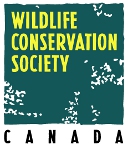- 2C1Forest Atlas |
- Use Cases |
- Minnesota Forest Modeling
Minnesota Forest Modeling

Explore related items…
Using Data Basin as a tool to engage stakeholders
The Conservation Biology Institute (CBI) and The Nature Conservancy (TNC) collaborated to forecast how the forests of northeastern MN may be altered due to climate change. Data Basin was used to share the model inputs and outputs and to solicit feedback from stakeholders.
A group of 22 local and regional stakeholders met in April 2009 to identify gaps in scientific knowledge needed to better manage forests. Participants formulated 2–4 scenarios intended to reduce uncertainty regarding the effects of climate change.
A consensus emerged that the project should focus on two potential futures: 'hotter and drier' and 'warmer and wetter.' Hotter is assumed to mean towards the high end of temperature changes predicted by the recently available Global Circulation Models (GCMs). Warmer is assumed to mean towards the low end of temperature changes predicted by the same. Drier does not assume less precipitation. Rather, drier will be the largest decline or smallest increase in available water for plants (roughly precipitation – evapotranspiration). Likewise, wetter will be the largest increase in available water.
More specifically, CBI is using the LANDIS-II landscape simulation model. Dr. Rob Scheller developed a new succession extension that directly incorporates a forest growth model in order to better predict inter-annual variability, drought and CO2 fertilization effects.
As model outputs are available in Data Basin to enable local and regional land mangers to visualize and comment on the findings.
- Citation
- Tosha Comendant. 2010. Minnesota Forest Modeling. In: Data Basin. [First published in Data Basin on Feb 14, 2010; Last Modified on Feb 3, 2013; Retrieved on Dec 5, 2025] <https://databasin.org/articles/feebe149db894d3788e8fba9ffa1b0d4/>
About the Author
Senior Scientist at Conservation Biology Institute working on the conversion of scientific knowledge into conservation practice. Team lead for Conservation Planning and Management.I am one of the creators of Data Basin, a science-based mapping and analysis platform that supports education, research,...



